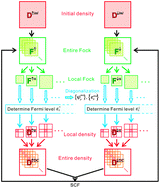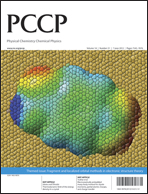How does it become possible to treat delocalized and/or open-shell systems in fragmentation-based linear-scaling electronic structure calculations? The case of the divide-and-conquer method
Abstract
The authors have developed a fragmentation-based linear-scaling electronic structure calculation strategy named the divide-and-conquer (DC) method, which has been implemented into the GAMESS program package. Although there are many sorts of fragmentation-based linear-scaling schemes, most of them require the charge and spin multiplicity of each fragment a priori. Therefore, their applications to delocalized and/or open-shell systems have been limited. However, the DC method is a notable exception because the distribution of electrons in the entire system is automatically determined by the universal Fermi level. In this perspective, the authors have summarized the performance of the linear-scaling self-consistent field (SCF) and post-SCF calculations of delocalized and/or open-shell systems based on the DC method. Furthermore, some future prospects of the method have been discussed.

- This article is part of the themed collection: Fragment and localized orbital methods in electronic structure theory

 Please wait while we load your content...
Please wait while we load your content...